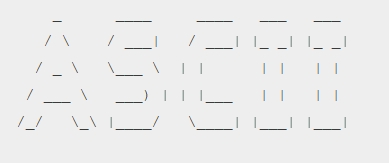ASCII stands for American Standard Code for Information Interchange. It is a code that has been in use since before the days of personal computing, and it is still used today to represent text on computers.

ASCII uses 128 different symbols, which are numbers from 0-127, to represent letters, punctuation marks and other characters.
The goal of ASCII was to create an easy way for humans to interact with computers without having any special knowledge about how they work or what codes they understand.
ASCII was developed by the X3 committee in 1963. The first version was published in 1963 and it has been updated with new changes every few years until 1986. The ASA Committee – a part of the American Standards Association – made up ASCII. In 1963, they published it as ASA X3.4-1963. It has been revised 10 times since then, the latest being 1986’s ASCII standard update, which is called ASCII X3.4-1986 (aka ANSI).
What is Extended ASCII?
Extended ASCII is a set of characters that are not available in standard ASCII. These character sets include the extended Latin letters, Greek letters and Russian Cyrillic alphabet. Extended ASCII was developed to allow more languages to be represented on computers by extending the number of people who could use one code for all their world’s writing systems.
In 1988, an American Standard Association (ASA) committee published this extension as ASA X-208 which allowed support for international scripts such as Japanese kana or Chinese ideograms with variations in different countries’ alphabets being designed into it from the start so they would work together within a computer system without extra conversion steps needed when using them.
The first version of Extended ASCIIC (1987) had a total of 128 characters and extended ASCII (1988) allowed 256.
The standard is maintained by the ISO/IEC and includes specific code assignments as well as rules for mapping to other character sets.
ASCII was originally developed in 1963 at American Standard Company, Inc., now known as ANSI X-208 from which the acronym “ASCI” originates.
To make it easy to remember how some symbols are spelled or pronounced on an English keyboard without looking them up when writing you will find that using ALT+GRAPH key combinations with your left hand will produce most letters of the alphabet and all punctuation marks except those below escape: ~ ! @ # $ % ^ & * ( ) _ + =.